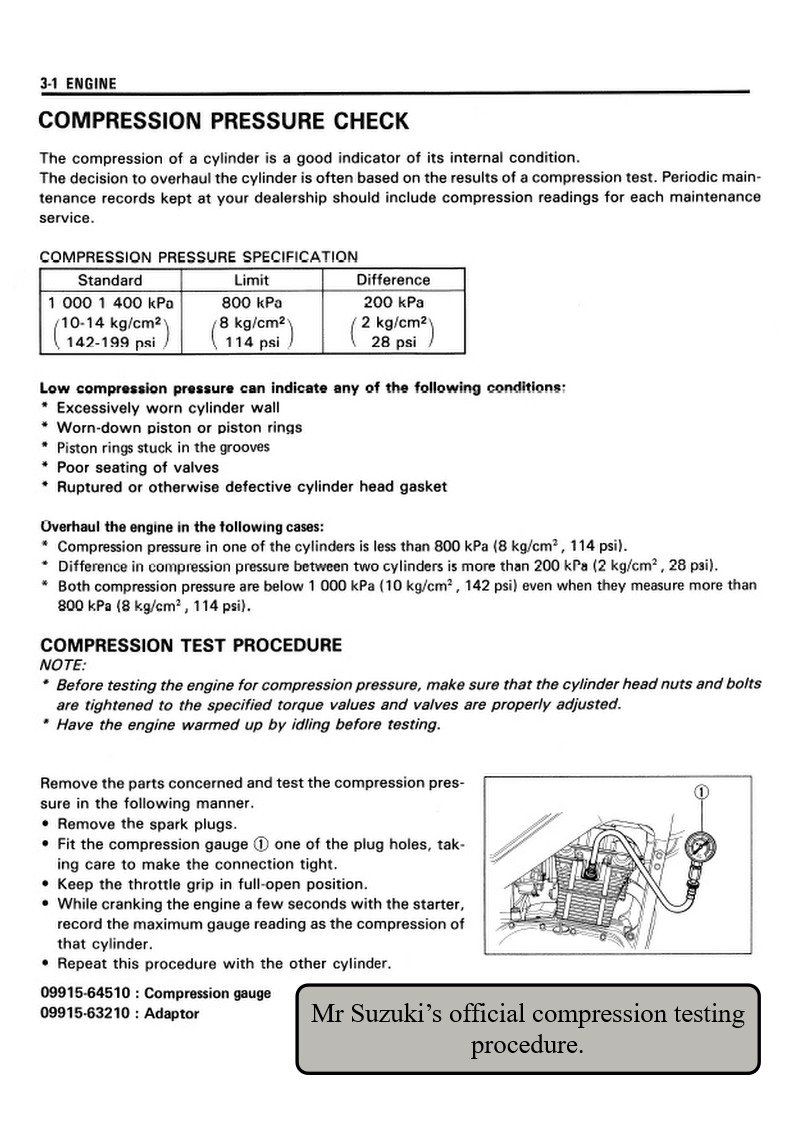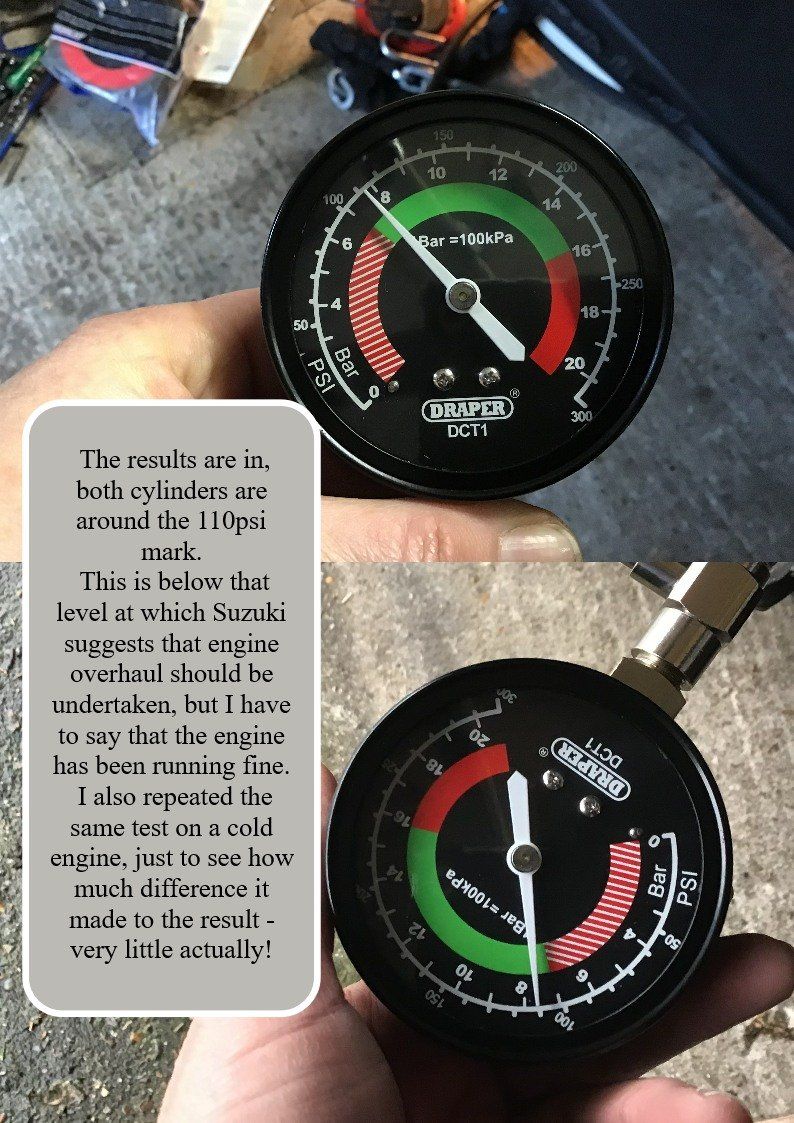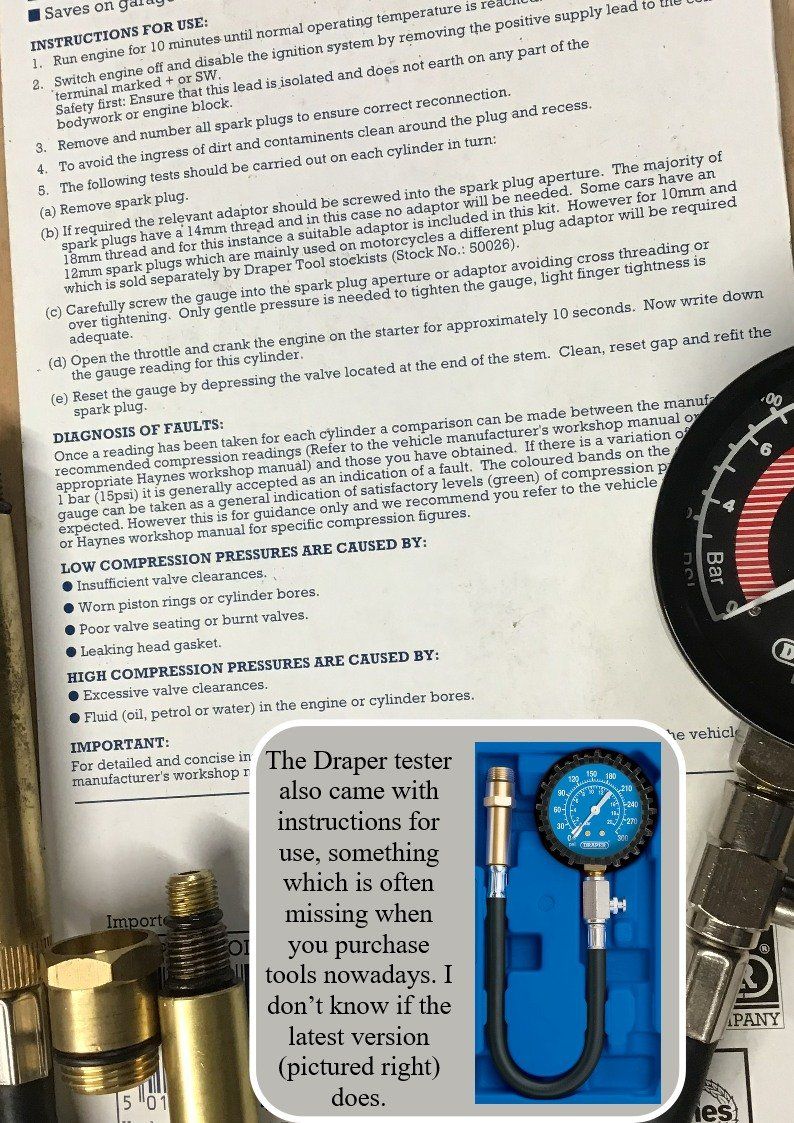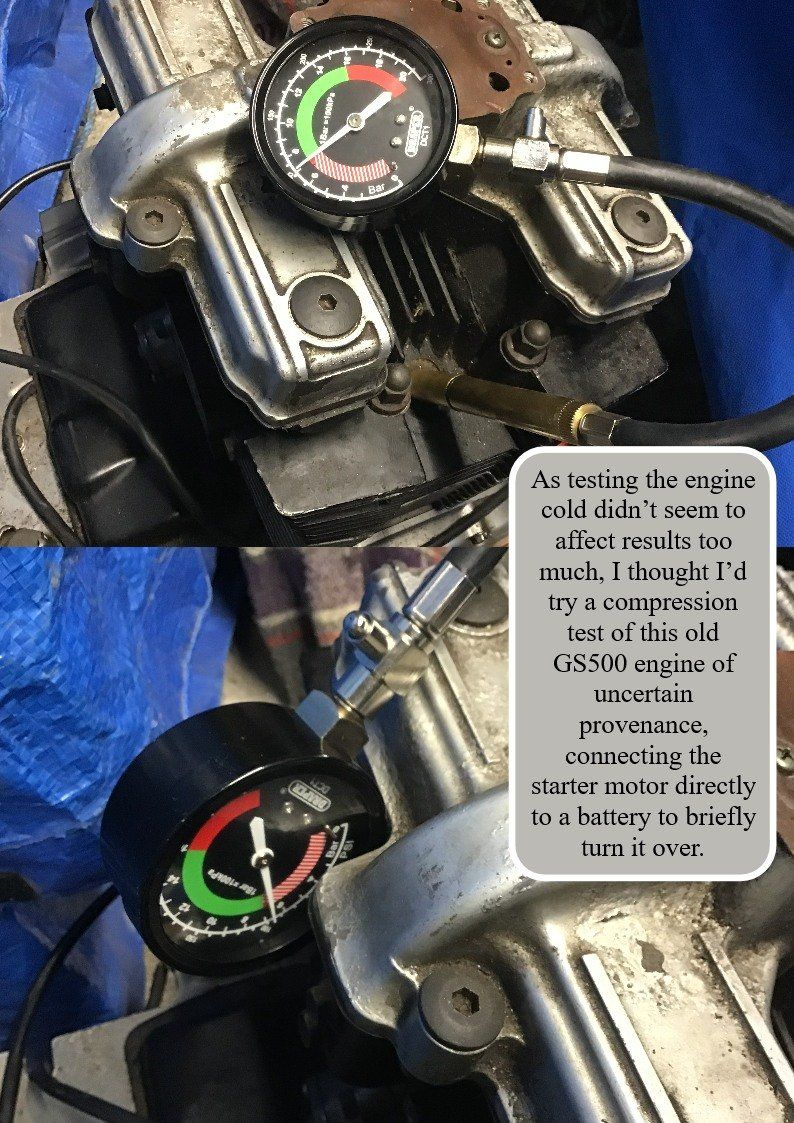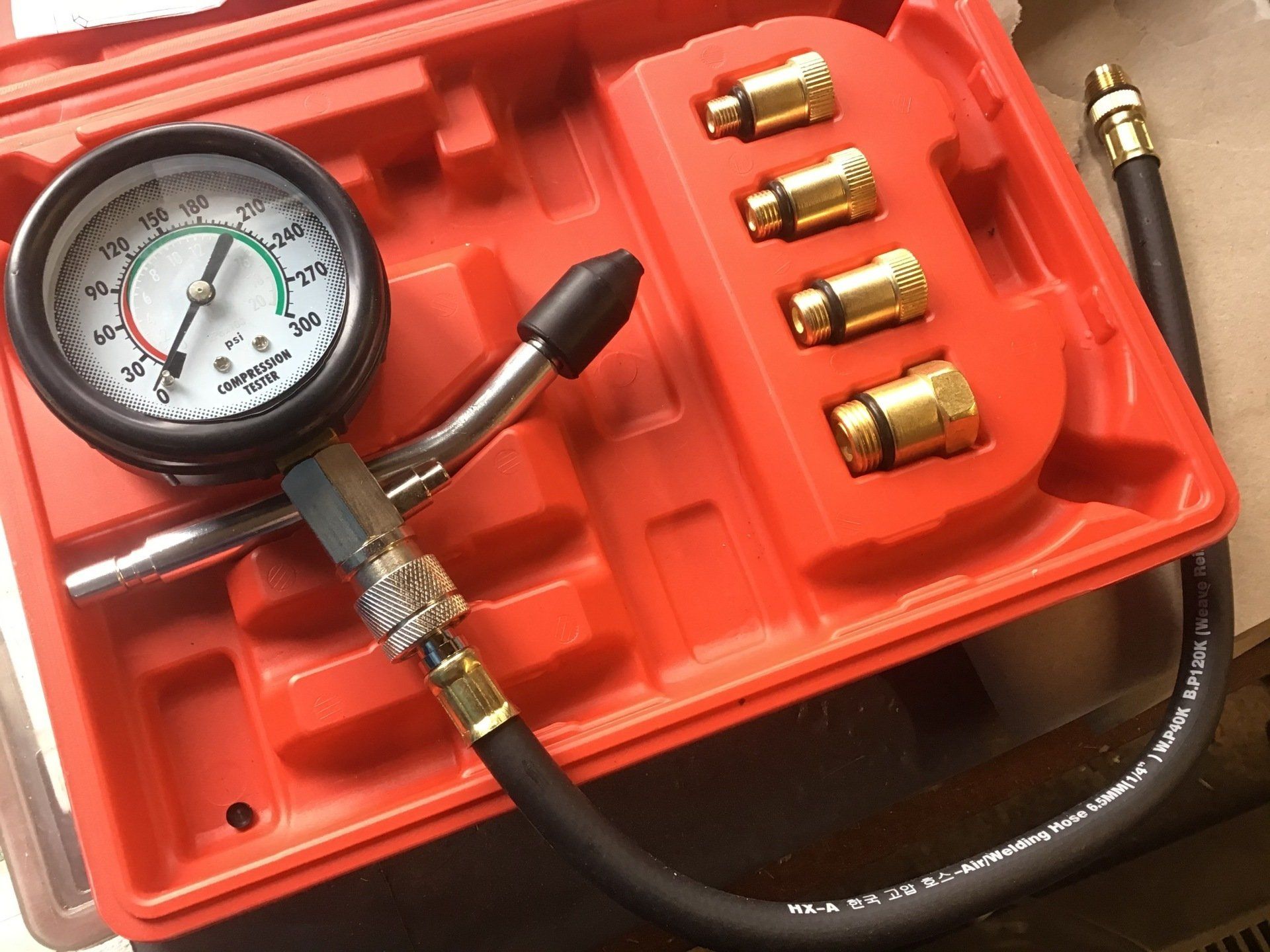COMPRESSION TESTING A MOTORCYCLE ENGINE
If you’re not used to working on your own bikes, performing a compression test sounds very technical, but it’s not. If you can change a sparkplug, you can do a compression check. And, you can get a cheap compression tester for around a tenner. But why should you want to?
A compression test gives a simple visual indication of how healthy the top end of your engine is, without having to take anything apart! Most manufacturers will give pressure figures for a healthy engine and also specify a lower limit, below which, it may well be time for some remedial work.
In the picture below is the official Suzuki compression test procedure for a GS500. It gives a figure for a healthy, standard cylinder 142 - 199 psi and a lower limit of 114 psi. There are a few other conditions that Suzuki state. The GS500 is a twin, so a compression test is done for each cylinder. If they’re both above 142 psi, then everything’s rosy. One cylinder can be below 142 psi, right down to that 114 psi lower limit, provided the other cylinder reads at least 142 psi, but (there’s always a but!) there should only be a 28 psi difference between the two. If neither cylinder reaches the magic 142 psi, Mr Suzuki says you need to overhaul it (even if they’re both above 114 psi). It’s important to check what the manufacturer specifies for you own machine. If you’ve got something really odd that you can’t find any specification for, as a (very) general rule of thumb, you need at least 100 psi for an engine to start and run reasonably well.
Whisper it, but my own GS500 has quite happily run for sometime with compression figures well into Mr Suzuki’s ‘you need to fix it’ range, as you will shortly see.
For this test I used a Draper compression tester. It’s an old model, I believe that the equivalent model now is this one: ‘Draper Compression Tester Stock No: 35880’. The one that looks exactly like my old Draper is now available badged as a
Gunson.
Depending on what bike you’ve got, you will probably also need an adapter to match the plug thread. Draper have their own brand version ‘Short Reach Adaptor (65mm) Stock No: 02150’ There are many other branded and unbranded testers available, so take your pick! I purchased a cheap version from Amazon, just to see what it was like. I paid £6 for it (including delivery!). The price has gone up now, so expect to pay around £12. More details on my Amazon set can be found at the bottom of the page.
The basic method for performing a compression check is as follows: Warm up the engine, whip out the sparkplugs and screw in the compression gauge, turn the engine over with the throttle held wide open until the reading stabilises. Repeat for however many cylinders you have, and then compare with the manufacturers figures. What you have to do next depends on how the numbers stack up!
There may be a few more precautions, though, which you might need to check in the manual. For the old Suzuki, the sparkplugs need to be grounded, so put them back into the plug caps and rest the threaded part on the cylinder head. Ideally away from any open plug holes so that they don’t accidentally ignite any fuel vapour that may emerge when the engine is cranked over.
As the hot / cold readings were very similar, I thought I'd do a test on an old engine that I've acquired, just to see what kind of state it was in.
This was my Amazon bargain, unfortunately as initially supplied, the flexible hose wouldn't connect to the gauge. I should really have sent it back, but I can never resist the challenge of trying to fix something and luckily, with a little fettling, everything was made to fit. I've tried it, seems to work fine. I actually like these adapters better than the Draper one, they have a nice chamfer for the O ring to seal against. There are many sets that look very similar to this available, this is one from Amazon. Here's an Ebay variant. And finally a Machine Mart option.

